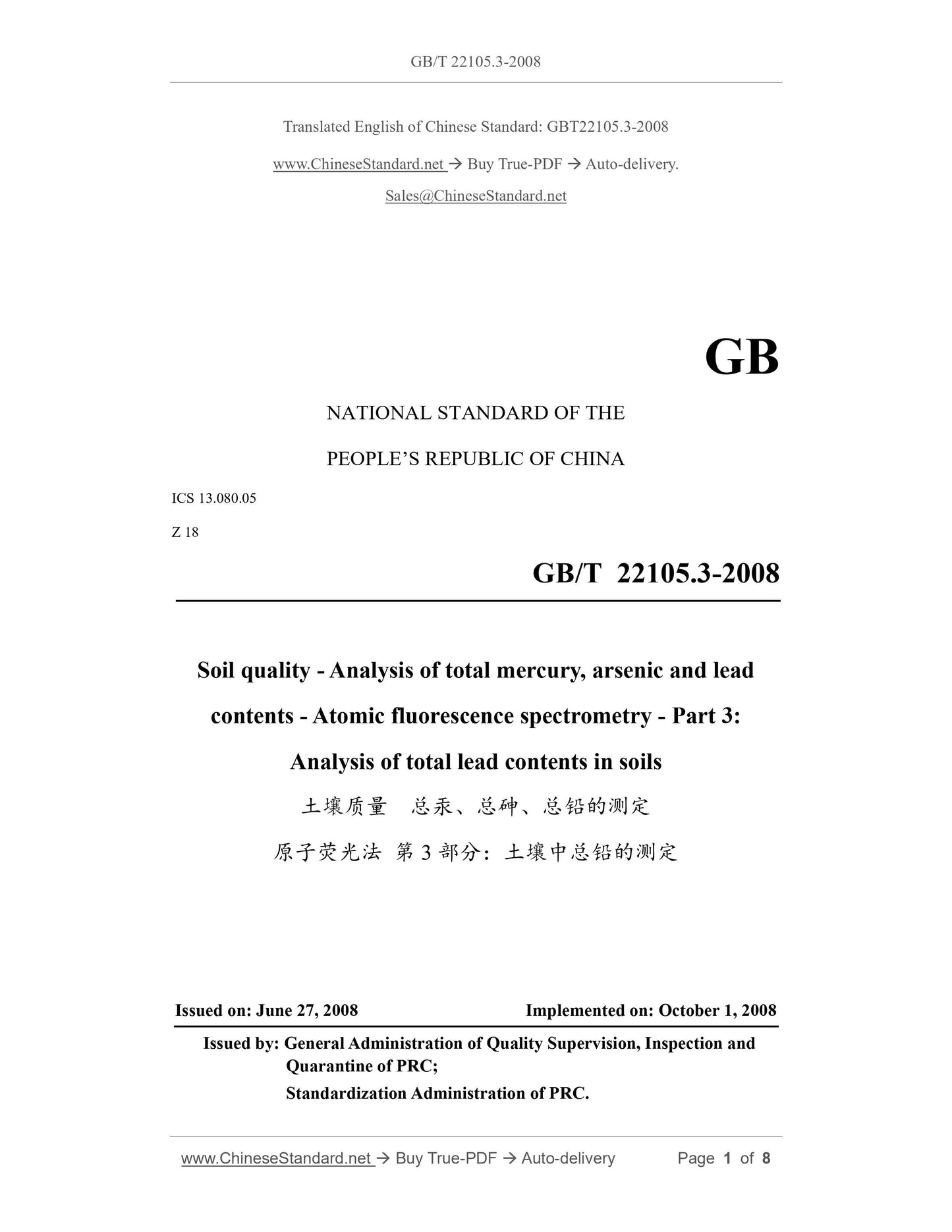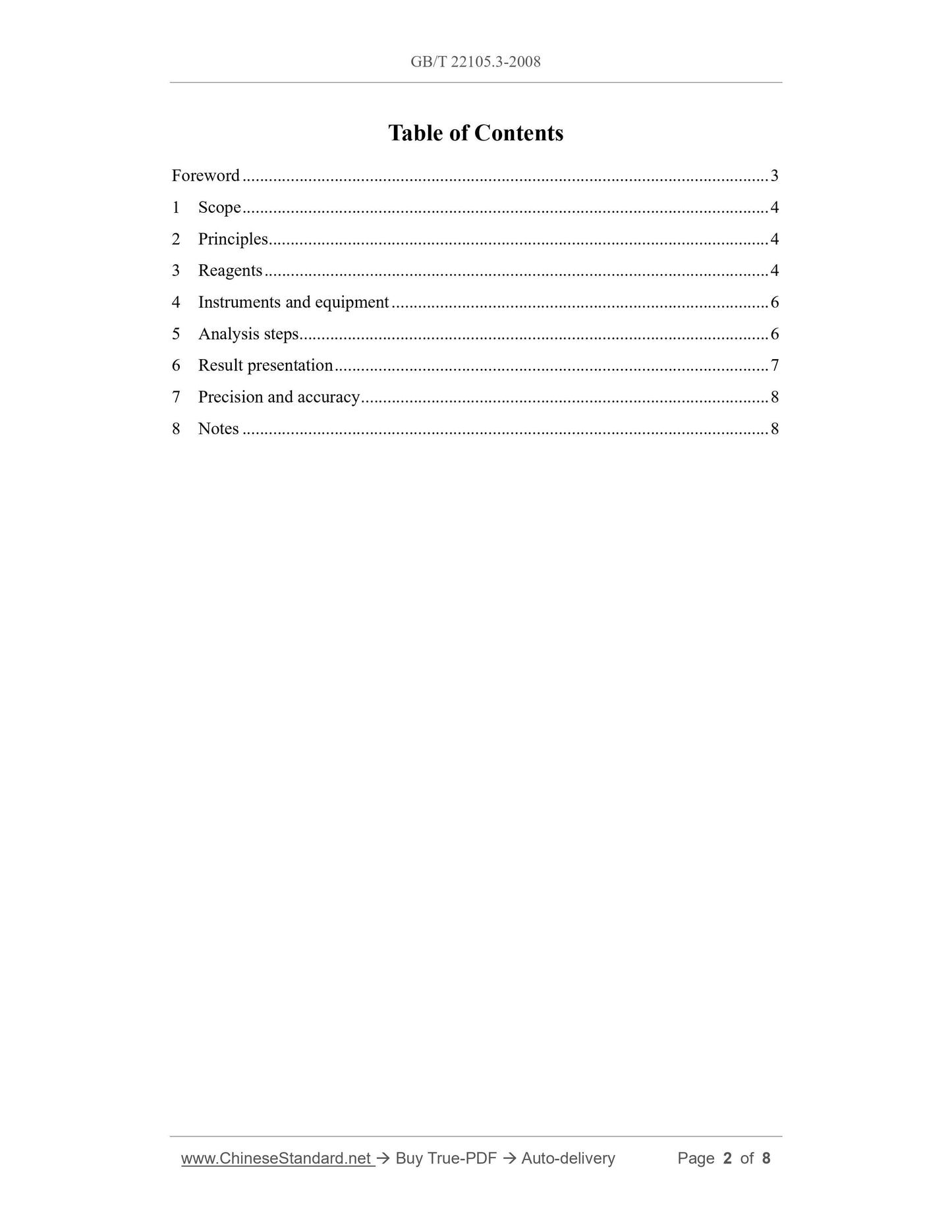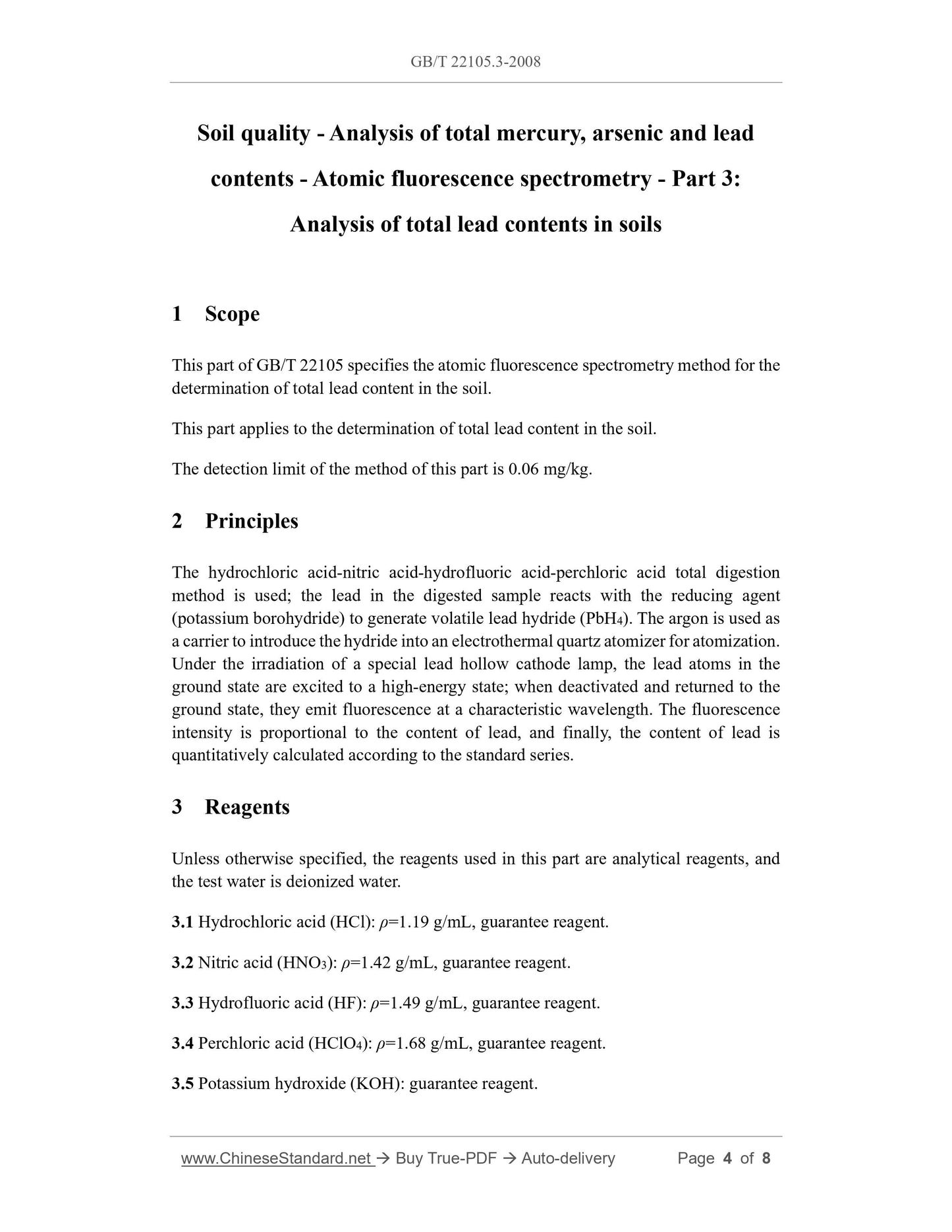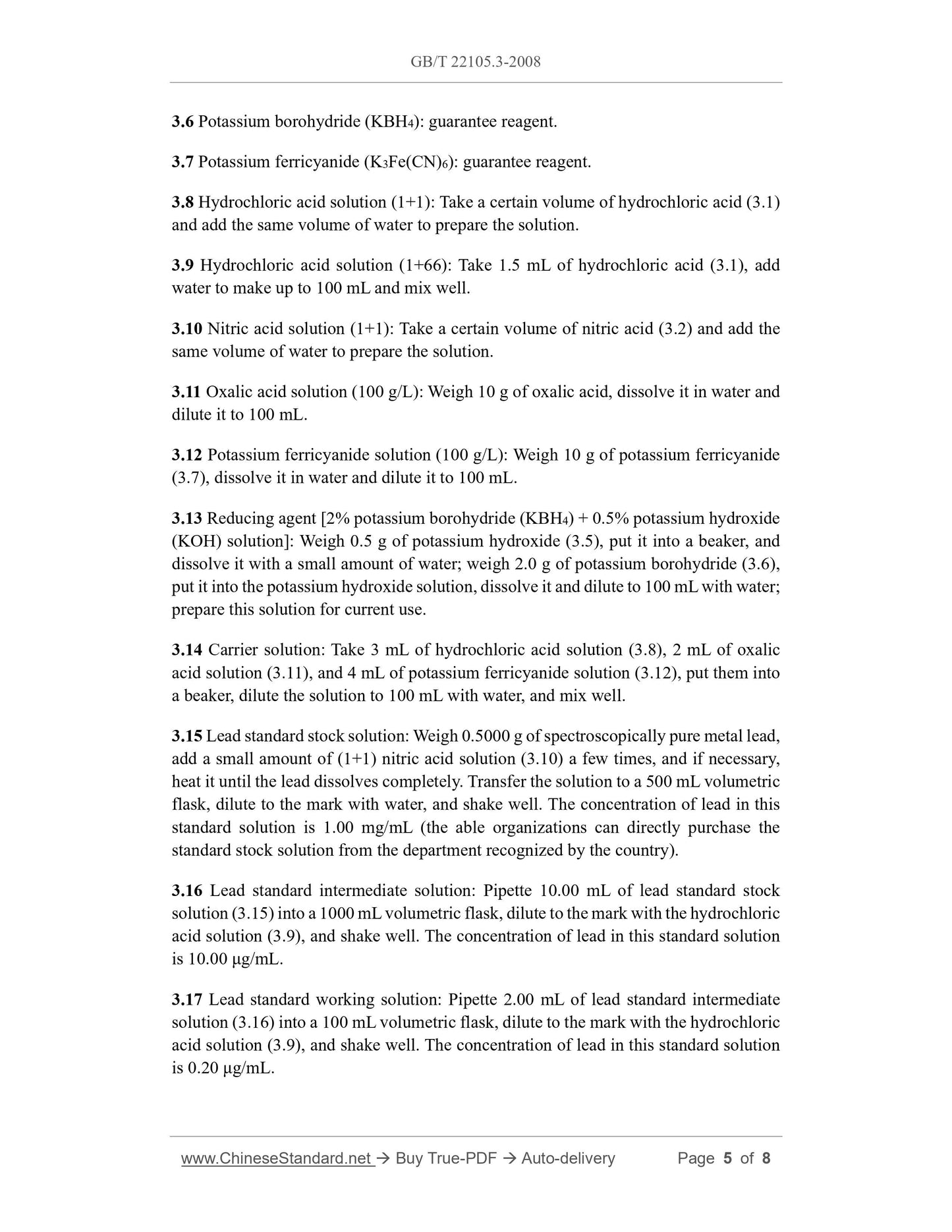1
/
of
4
www.ChineseStandard.us -- Field Test Asia Pte. Ltd.
GB/T 22105.3-2008 English PDF (GB/T22105.3-2008)
GB/T 22105.3-2008 English PDF (GB/T22105.3-2008)
Regular price
$110.00
Regular price
Sale price
$110.00
Unit price
/
per
Shipping calculated at checkout.
Couldn't load pickup availability
GB/T 22105.3-2008: Soil quality -- Analysis of total mercury, arsenic and lead contents -- Atomic fluorescence spectrometry -- Part 3: Analysis of total lead contents in soils
Delivery: 9 seconds. Download (and Email) true-PDF + Invoice.Get Quotation: Click GB/T 22105.3-2008 (Self-service in 1-minute)
Newer / historical versions: GB/T 22105.3-2008
Preview True-PDF
Scope
This part of GB/T 22105 specifies the atomic fluorescence spectrometry method for thedetermination of total lead content in the soil.
This part applies to the determination of total lead content in the soil.
The detection limit of the method of this part is 0.06 mg/kg.
Basic Data
| Standard ID | GB/T 22105.3-2008 (GB/T22105.3-2008) |
| Description (Translated English) | Soil quality -- Analysis of total mercury, arsenic and lead contents -- Atomic fluorescence spectrometry -- Part 3: Analysis of total lead contents in soils |
| Sector / Industry | National Standard (Recommended) |
| Classification of Chinese Standard | Z18 |
| Classification of International Standard | 13.080.05 |
| Word Count Estimation | 6,650 |
| Date of Issue | 2008-06-27 |
| Date of Implementation | 2008-10-01 |
| Regulation (derived from) | Announcement of Newly Approved National Standards No. 10 of 2008 (total 123) |
| Issuing agency(ies) | General Administration of Quality Supervision, Inspection and Quarantine of the People's Republic of China, Standardization Administration of the People's Republic of China |
| Summary | This standard specifies the total lead in soil atomic fluorescence spectrometric method, This section applies to the determination of total lead in soil, this part of the detection limit is 0. 06 mg/kg. |
Share







